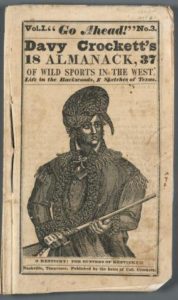Every year I am big on New Year’s Resolutions. Most of the time I resolve to lose weight, work out, eat healthier, etc. But this year I resolved to write a book I promised the Director of East Texas Historical Association Scott Sosebee several years ago. Several complications arose such as double knee replacement, caring for my elderly father, and negotiations concerning the content of the book. Finally last summer we agreed on the subject matter.
The book is an early history of Greenville. I mean really early, even before the county and town were created. Dr. Sosebee and I agreed that it would be very interesting to look at three of my favorite topics in Texas history: agriculture including subsistence farming and livestock ranching, Civil War, and Reconstruction. All three preceded the cotton boom and railroads. Life was simple but very interesting and exciting.
For more than twenty years I have collected articles, news clippings, and notes taken while reading about Northeast Texas. So the day after Christmas, I tackled my filing cabinets. I have three 3-drawer filing cabinets crammed full of local history, documents relating to my Masters’ Thesis on the Mercer Colony, and my personal genealogy. To be honest, much of it is a disaster.
It has taken almost a week to work my way through the fascinating story of the Mercer Colony of which the southern portion of Hunt County was included. When I finish the Greenville book, I plan to convert my thesis into a book and try to find a publisher. But right now I am on the trail of the earliest settlers in the Greenville area, be they the early Caddo Indians who hunted in the area, the displaced Native Americans fleeing from war and disease brought by Europeans, or the earliest US citizens.
My friend Skipper Steely of Paris has had a lifelong interest in Northeast Texas history. He and his brothers are descendants of Claiborn Wright who arrived at Pecan Point near Jonesborough after six month on a flatboat from Tennessee in 1819. Skipper’s book “David Crockett: A Tour Across Northeast Texas” is a wonderful source of information. Skipper has used Dr. Rex Strickland’s works as some of the best source material for earliest Northeast Texas.
Because little research has been done of the time and place, finding new material is extremely exciting. As I was going through papers I came across a bit about Davy Crockett. He may or may not set out to escape from an unpleasant marriage or looking for good hunting ranges or out for a fight on the side of the Texians. It seems that at some point writers have doubted the veracity of David Crockett’s coonskin cap. But in Skipper’s book, he verifies that Crockett had one on his head. While a coonskin cap keeps the head warm, someone recorded that he was wearing it on March 6th when the Mexicans under General Santa Ana attached the Alamo. Normally, that time of the year is pleasant weather, but in 1836 a blue norther came roaring down on San Antonio. I’m certain that his headgear was the last thing on David Crockett’s mind that fateful morning.
The book will be filled with fraudulent land speculators, brush men and vigilantes in the late 1850s, tales of horrible violence during Reconstruction as well as stories of Indian encounters and courtroom gunfights. I promise all are true events in Greenville and the surrounding area.

